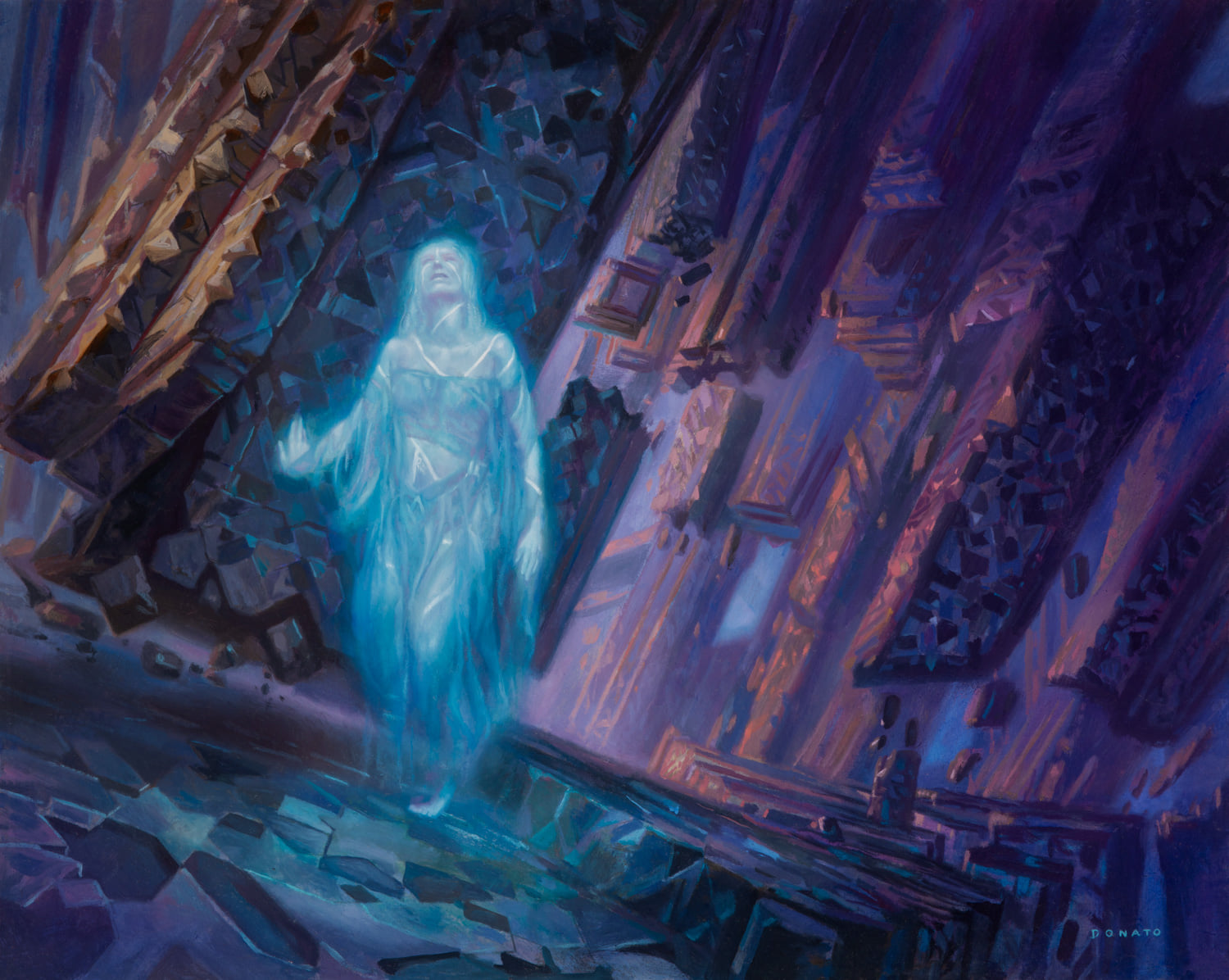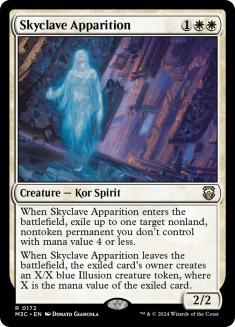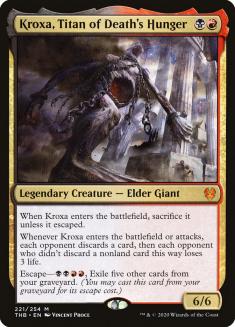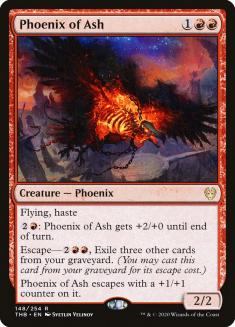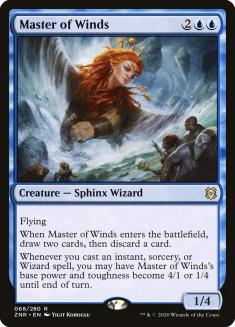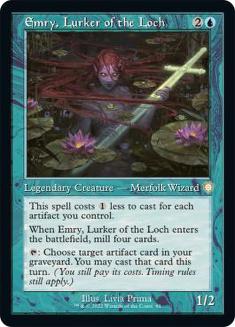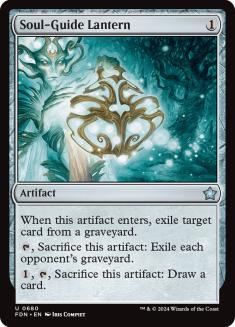White has been the least-played color in Standard for a long time now, but with ramp strategies taken down several pegs, a lot of white decks suddenly look viable. And to my mind, it’s all thanks to the power of Skyclave Apparition.
Why is this card so important?
Well, to start with, it’s simply a very strong card. If you exile something and Skyclave Apparition lives, the result is unambiguously great, but unlike Banisher Priest, if your opponent kills Skyclave Apparition, they don’t get their card back. Instead, they get a token, and a vanilla token is a lot weaker than a permanent with the same converted mana cost. So this is the best version of this effect that has historically been right around fringe-Constructed power level.
In context, it’s even better. The biggest point in Skyclave Apparition’s favor is that it permanently answers Kroxa, Titan of Death’s Hunger. The early reaction to bannings this week seems to be that a lot of people are playing various creature decks, which makes Rakdos Midrange, a deck full of creature removal, a naturally strong choice. Skyclave Apparition offers a check on the Rakdos deck’s inevitability that makes it much easier to grind against.
More generally, Zendikar Rising Standard really looks to revolve around permanents rather than the stack at the moment, so Skyclave Apparition has great targets against everyone.
So what kinds of decks use Skyclave Apparition?
By default, the burden of proof should be on not playing the card if you can cast it — it’s the strongest white card in Standard and belongs in almost any white deck. I think most decks based on Conclave Mentor likely aren’t playing it maindeck because it doesn’t fit their explicit synergies, but I also think there’s a good chance that’s a mistake. Skyclave Apparition is too strong not to play, so let’s look at some decks that use it:
Creatures (33)
- 4 Faerie Guidemother
- 1 Kenrith, the Returned King
- 4 Bonecrusher Giant
- 4 Winota, Joiner of Forces
- 4 Selfless Savior
- 2 Legion Angel
- 4 Skyclave Apparition
- 2 Archon of Emeria
- 4 Kargan Intimidator
- 4 Luminarch Aspirant
Lands (20)
Spells (7)
Sideboard

Skyclave Apparition is a great inclusion with Winota since it gives you interaction without hurting your creature count, and unlike Bonecrusher Giant, it actually puts a creature directly onto the battlefield, allowing you to interact while curving out nonhuman creatures to trigger Winota.
This particular take on Winota emphasizes flying non-Humans to maximize your ability to get triggers without losing the creatures that are attacking to generate those triggers. Fearless Fledgling is another card that could be played to lean even further in that direction, but it’s just so weak to draw late or if you happen to have a land-light draw (which is difficult with this number of DFCs, but it’s still an unnecessary risk).
Phoenix of Ash is in the sideboard to punish Rogue/Mill strategies and also to allow for extra grinding against decks full of removal. Most of the rest of this should be pretty standard. Kargan Intimidator is played over Seasoned Hallowblade due to its ability to make itself a Coward to trigger Winota when it attacks.
I considered Nahiri, Heir of the Ancients, but I just think it’s too slow for this strategy and generally not very strong without Equipment.
Creatures (29)
- 3 Giant Killer
- 1 Taranika, Akroan Veteran
- 4 Alseid of Life's Bounty
- 4 Seasoned Hallowblade
- 4 Selfless Savior
- 1 Legion Angel
- 4 Skyclave Apparition
- 4 Kor Blademaster
- 4 Luminarch Aspirant
Lands (19)
Spells (12)

This version of Mono-White Aggro is mostly invested in making a big creature with Maul of the Skyclaves or, failing that, Luminarch Aspirant, and then protecting it.
Selfless Savior and Alseid of Life’s Bounty are strong one-drops that happen to offer a good infrastructure for building on a single creature, so I’ve leaned into that with Luminarch Aspirant and Maul of the Skyclaves. Once I’m leaning into investing in a creature this way, I want more durable creatures and more ways to protect my creatures, so Seasoned Hallowblade is a great fit and Fight as One and Sejiri Shelter offer some strong instants to protect creatures that my opponent might not see coming.
Giant Killer, Skyclave Aspirant, and Kabira Takedown offer an unusual amount of maindeck removal for a white aggro deck without dedicating any cards exclusively to removal, which allows this deck to take more of a midrange role than such a deck might generally have available.
This deck really highlights the strength of DFCs in focused decks. The DFCs let this deck play cards that would normally be too narrow, but beyond that, there are just a lot of cards that serve dual purposes as threats or protection spells or threats and removal spells, which offers this deck a lot more play than aggressive white decks have had historically.
There are a variety of takes on Selesnya Midrange available. Here’s an example of Selesnya Adventures with an emphasis on playing a midrange game:
Creatures (30)
- 2 Scavenging Ooze
- 4 Lovestruck Beast
- 4 Giant Killer
- 4 Edgewall Innkeeper
- 4 Shepherd of the Flock
- 4 Murasa Rootgrazer
- 4 Skyclave Apparition
- 4 Kazandu Mammoth
Planeswalkers (1)
Lands (19)
Spells (10)

Shepherd of the Flock picks up some interesting tricks with Zendikar Rising. Since Usher to Safety can target lands, you can pick up a land just to trigger landfall or you can use it to pick up a DFC to cast the front side later in the game, which plays particularly well with Kabira Takedown but it’s generally excellent with any DFC. I’d play more DFCs, but I need basic lands to work with Murasa Rootgrazer.
Murasa Rootgrazer’s primary function is to allow you to pick up lands and replay them to trigger landfall, particularly on Felidar Retreat, but as it happens this deck can also draw a lot of cards with Edgewall Innkeeper or The Great Henge. And in those spots, Murasa Rootgrazer can just let you play an extra land every turn.
While Skyclave Apparition is great for offering strong interaction to creature decks without decreasing their threat density, you can get even more out of it if you can trigger it multiple times. This Selesnya deck dabbles in that with Usher to Safety, but what about Yorion, Sky Nomad?
Creatures (41)
- 4 Solemn Simulacrum
- 4 Lotus Cobra
- 4 Lovestruck Beast
- 4 Beanstalk Giant
- 3 Giant Killer
- 4 Edgewall Innkeeper
- 4 Bonecrusher Giant
- 2 Realm-Cloaked Giant
- 2 Shepherd of the Flock
- 4 Skyclave Apparition
- 2 Yasharn, Implacable Earth
- 4 Kazandu Mammoth
Lands (27)
Spells (12)

There are a lot of generically strong Naya Midrange cards, such that I don’t think there’s any real drop in quality when you go up to 80 cards. If anything, I’m starting to feel some of the relief you get in Modern where the lands you want to fetch are much worse than the lands you want to draw, and playing extra cards gives you more lands to fetch without making you draw them as much.
Basic lands are much worse to draw here than DFCs or Pathways, but this deck wants a lot of basics to support Fabled Passage, Beanstalk Giant, and Solemn Simulacrum. You just couldn’t do something like what this deck is doing with its mana in 60 cards and we pick up a free Yorion for our trouble.
If the format really is a bunch of midrange creatures getting value off each other, Skyclave Apparition and Adventure creatures really shine, but this deck goes even further, extending into Elspeth Conquers Death and Realm-Cloaked Giant to really go over the top.
Of course, there are a lot of different ways to use Yorion. Here, we’re just taking advantage of it as a relative freeroll and going just barely out of our way to increase the strength of the enters-the-battlefield ability with cards like Solemn Simulacrum, but Yorion’s the king of value, so if that’s what this format’s about, we can take it a lot further.
Creatures (28)
- 4 Solemn Simulacrum
- 3 Charming Prince
- 2 Brazen Borrower
- 1 Dream Trawler
- 3 Yorion, Sky Nomad
- 3 Barrin, Tolarian Archmage
- 4 Skyclave Apparition
- 4 Glasspool Mimic
- 4 Master of Winds
Planeswalkers (1)
Lands (24)
Spells (27)

I included Master of Winds just to try it, and honestly, I was really impressed. It digs for things you’re looking for pretty quickly, it’s awesome to copy with Glasspool Mimic, it draws a card when you Shatter the Sky, and it can hit remarkably hard. A lot of games I just assembled battlefield of three or more copies of Master of Winds and then turned all of them into 4/1s for a huge attack.
Blinking Glass Casket and Barrin, Tolarian Archmage offers a clean solution to the tokens you make blinking Skyclave Apparition, and Elspeth Conquers Death pairs really well with Skyclave Apparition both in that it answers cards Skyclave Apparition can’t and it returns Skyclave Apparition, which your opponent always tries to kill.
This deck doesn’t have any counterspells, so it plays differently from most Azorius decks. This is actually closer in style to the Naya Midrange deck with Yorion but it just leans even more into the Bird Serpent.
It’s possible this sideboard should have some Negates or Neutralizes or something, depending on how the metagame settles, but for the most part this is happy to play as a tap-out value deck.
A different take on Yorion is, as we’ve seen before, to pair it with Doom Foretold. There are a lot of different ways you can do that, but here’s a version with Emry, Lurker of the Loch:
Creatures (15)
Planeswalkers (1)
Lands (30)
Spells (34)

Treacherous Blessing is notably absent from this build. It’s awesome with Doom Foretold, but without a secondary way to get rid of it in a timely fashion, I think it’s just too risky, and there are plenty of other value permanents I can play that I’m happy to sacrifice to Doom Foretold even if they don’t draw quite as many cards.
To make up for losing that big burst of cards, this deck uses Emry, which, if unanswered can easily draw that many cards. But even if it’s killed, it accelerates us to an end-game of casting a large Dance of the Manse and also powers up our Elsepth Conquers Death, which is a little light on creatures to return.
Four maindeck Soul-Guide Lanterns is unusual, but they allow for a Turn 2 Emry and offer a cheap way to draw cards with Emry while giving access to powerful hate to a number of possible opposing strategies, especially Rakdos Midrange. Attacking the opponent’s graveyard is particularly important with Doom Foretold, which can otherwise struggle with permanents that come back from the graveyard, though Glass Casket and Skyclave Apparition are also good at stopping that.
Moving Forward
That covers Skyclave Apparition in aggro, midrange, and control and in combination with every color. As long as the format revolves around nonland permanents, Skyclave Apparition is one of the best cards available to get ahead in that kind of game. Like Bonecrusher Giant, it’s not great in every metagame, but as we saw last weekend with Bonecrusher, when the time is right, it can absolutely be one of the defining cards of the format.

